San Francisco-Based Painter Anoushka Mirchandani is a Woman Between Two Worlds
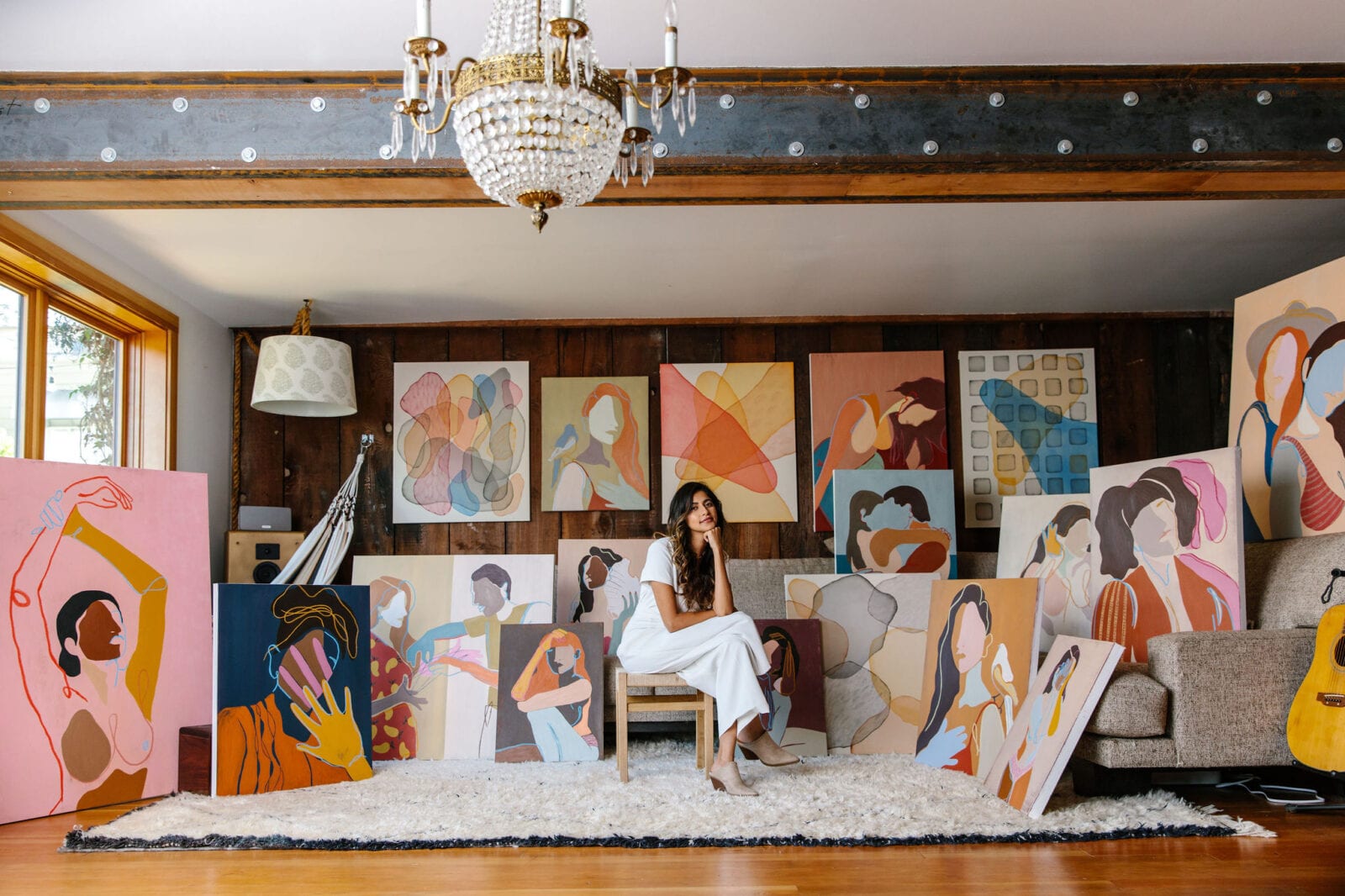
Up-and-coming painter Anoushka Mirchandani recently closed a sellout exhibition, Note to Self, at Glass Rice in San Francisco. While this alone is a significant feat and ideal outcome for any emerging artist, that she largely planned her debut solo show and created the works to be exhibited during quarantine makes it all the more impressive. Adapting to the new reality of pandemic life, she spent the initial months of isolation producing a series of both figurative and abstract paintings for the exhibition that speak to her personal experiences of being caught between two cultures: Indian and American.
Anoushka describes her newest works as a documentation of self-discovery as she navigated feelings of otherness, a woman’s place in society, and her identity as an artist. Beyond the literal representations of the female body, a recurring theme of what is covered versus uncovered in her works underscores her narrative. Identity is partly how we view ourselves, but also what we reveal to others. Her abstractions feature overlapping organic forms in various degrees of transparency while in her figurative works she integrates opaque blocks of color with freeform linework. In addition to serving as visual explorations of herself, what this inspiring collection demonstrates is that she has indeed found her creative voice and she’s gained the confidence to use it. We spoke with the artist to learn more about her inspirations and creative process.
Quote from her artist statement: “I work across multiple media to create figurative artworks that embody the emotions of what it feels like to be a woman in society today. My artworks are inspired by my patchwork identity; that of being Indian, being an immigrant, being an other, being an American, being a woman, and being an artist.”
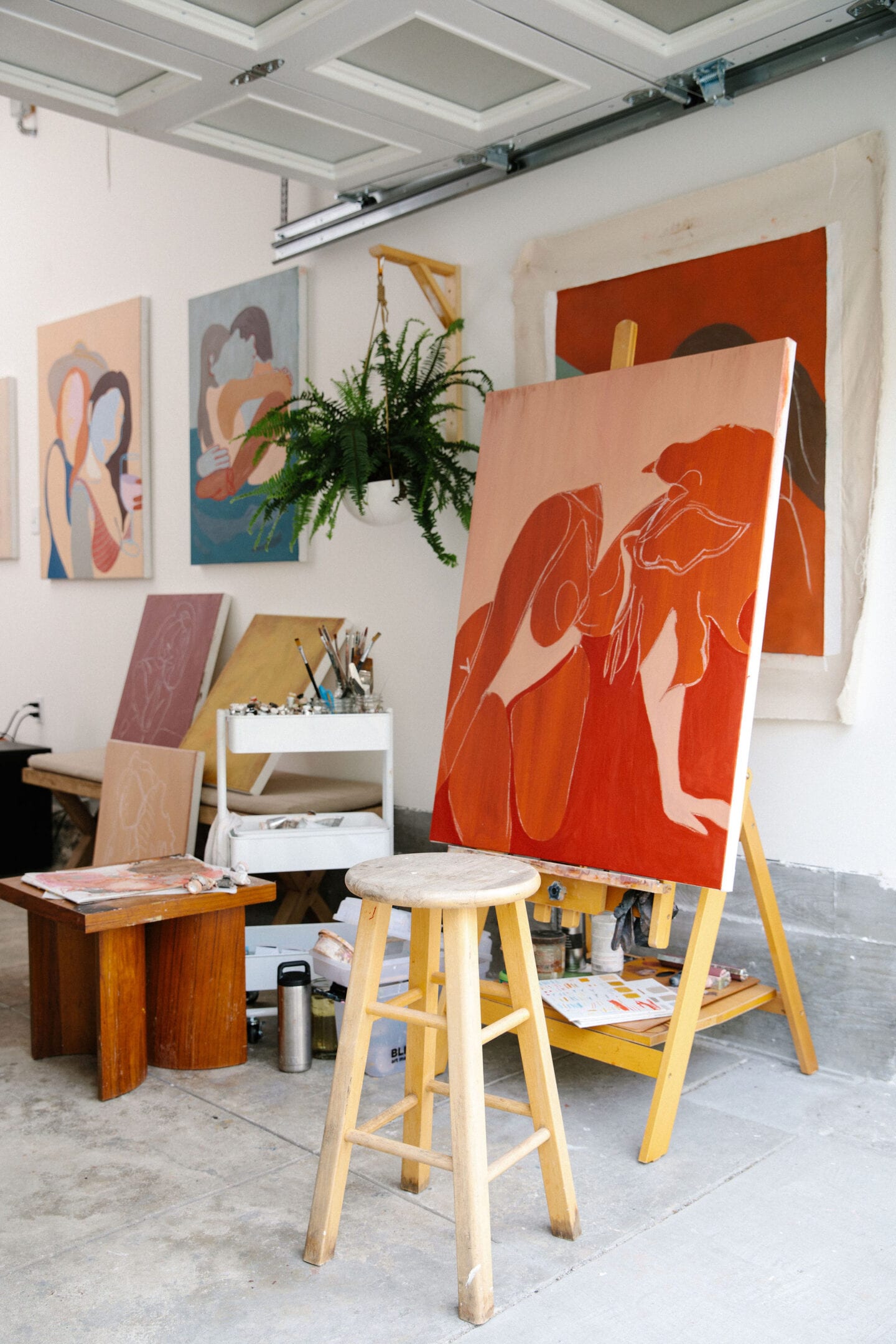
You were born and raised in India and then you relocated to the US as a teenager. In what ways did your upbringing eventually lead you to art and living a creative life?
I was born and raised in Pune, India. My childhood in India was fairly magical in many ways – full of sounds, smells and colours that make you feel alive. At the same time, India is also a patriarchal society with certain cultural parameters and mindsets that didn’t afford me the freedom I now feel living in San Francisco. I moved to the U.S when I was 18 for my undergraduate degree, and although I did not pursue a formal degree in art, art has always been a significant part of my life. Interestingly enough looking back on artworks that I created more than a decade ago, the primary subject matter of my paintings has always been the woman’s experience.
My cultural upbringing in India (and my own personal preconceptions) led me to cultivate the belief that art could never be a viable career choice for me. However, in retrospect, it’s clear that my supremely creative and supportive family truly paved the way for me to pursue my passion. My father, an immensely talented individual who moonlights as a photographer, and my mum who went back to school when I was in 2nd grade to become an interior designer – they have both inspired me to have the courage to reinvent myself.
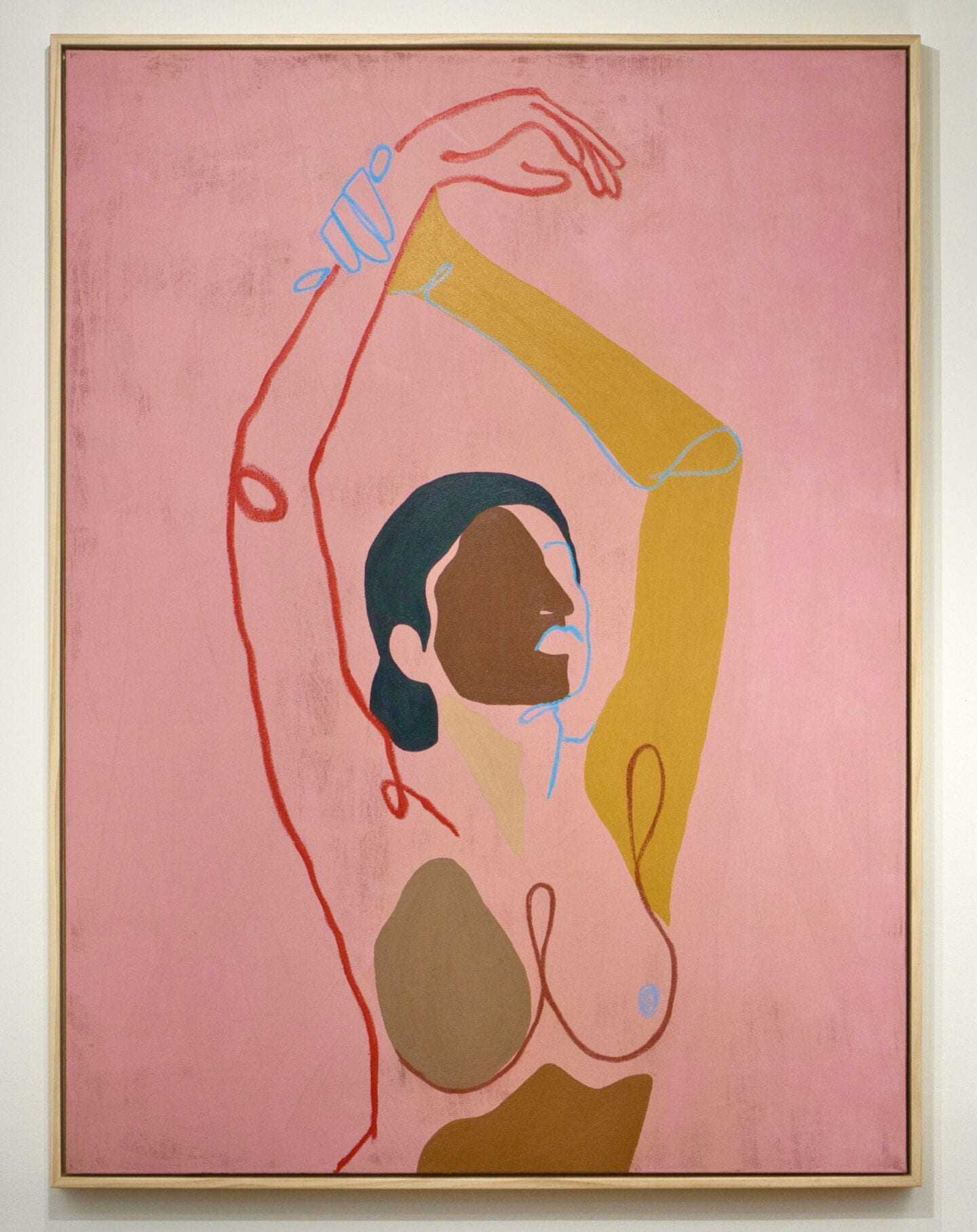
After experiencing a major transition such as an international move, it makes sense that this event would play a part in your work. How do you explore themes of clashing cultures, the role of women, and feelings of otherness in your artwork?
Moving to a tiny town in Ohio from Pune, India was a jarring, albeit transformational move, and it very much impacts the work I create. Personally, I felt like an outsider in college, where I did not fit in with the white kids, or the black kids and this sense of non-belonging chipped away at my confidence, and my comfort in my body given that all I wanted at the time was to fit in, and be a part of the collegiate community. My journey with art in a sense has been a journey back to myself, and as a result the work carries with it the tension of new-found freedom and rediscovered confidence pushing against years of non-belonging.
My first few collections focused on the nude figurative form in an effort to repair the relationship I had with my body — one of shame, and fear brought on by cultural preconceptions that I internalized growing up in India (showing too much skin, and inviting unwanted attention etc.) My latest collection, Note to Self, follows my personal journey of self-discovery as a woman living between two worlds, India and America, and the emotions and experiences that are part and parcel of that undertaking.
Your use of the phrase ‘patchwork identity’ to describe part of the narrative aspect of your work is so apt and relatable to many. What have been some of the challenges of being an immigrant in the US? A woman artist?
Being an immigrant in the US is definitely challenging, especially given the current socio-political context we are all living in. I think what is hard for people who are non-immigrants to understand is the level of fear and disempowerment experienced as an immigrant, which is a product of living in the grey space of unknowing. As an example from personal experience, I would hesitate to ask for a clearly deserved raise during my corporate career due to the fear of losing my immigration status as a result of losing my job. When you have to think twice about many of your personal decisions, and reconcile oneself with the lack of leverage you have, and the lack of security in your own home, it’s debilitating for any human being.
That being said, being an immigrant is fulfilling and rewarding in it’s own way. To be able to interact with, adapt and help shape a culture that was not initially yours, but is now entrenched within you is a unique experience. To be able to have multiplicities of being, and unbounded cultural perspectives has allowed me to develop a thirst for knowledge, and a desire to assist in the betterment of humanity as a whole irrespective of one’s nationality.
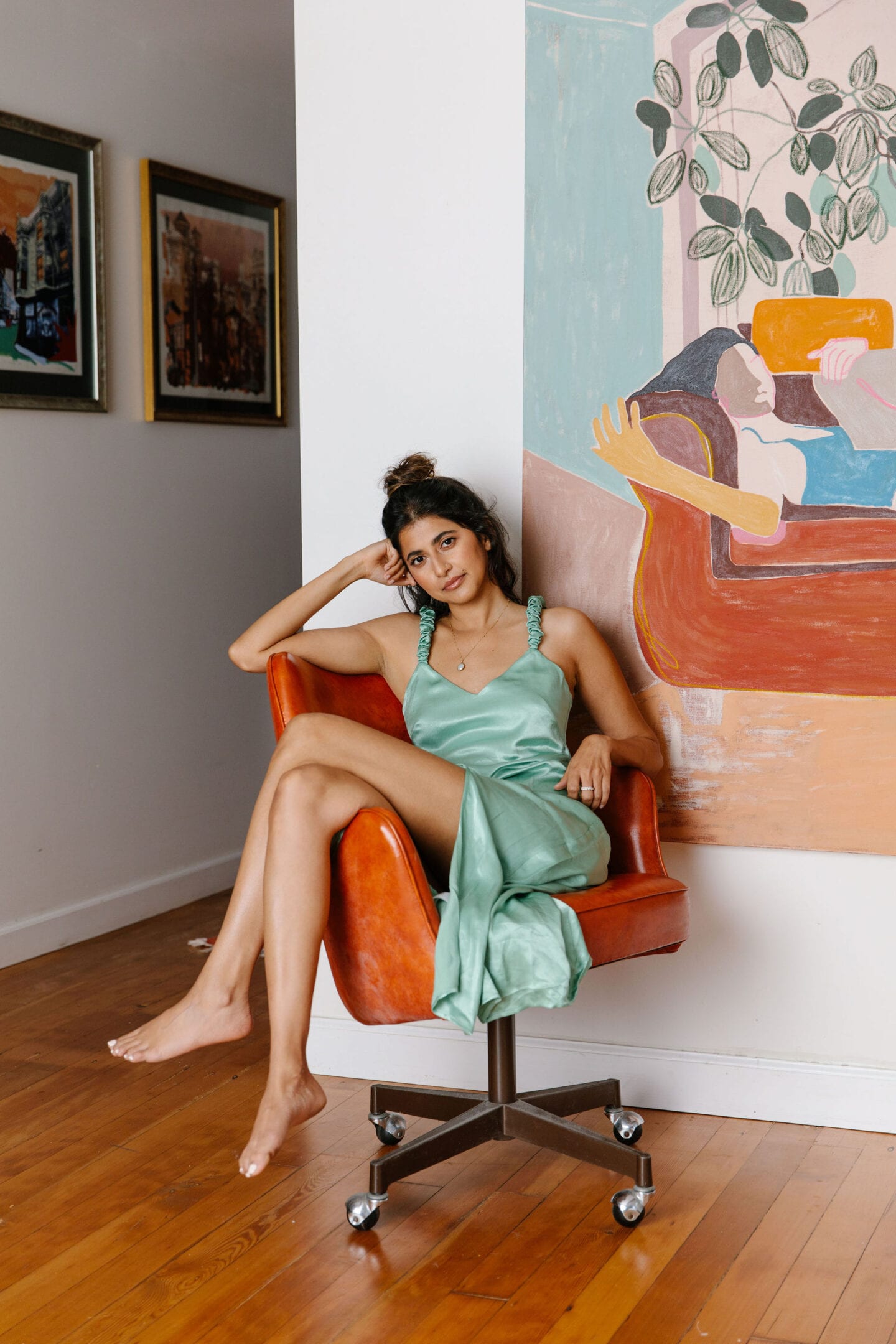
Do you have a set routine when you begin a new work or is your creative process more experimental and intuitive?
My figurative artworks usually begin with reflection on my personal observations, memories, future visions, and interactions with my community. I have a journaling practice, whereby every morning I spend some time distilling my thoughts into my journal, and oftentimes these pages are the breeding grounds for artwork ideas. The emotions that come to the surface during the process of sifting through, and engaging with my own experience usually give way to artworks to reveal and put forth these sentiments. My abstract artworks specifically, flow from a place of pure emotional essence. Although they seek to reveal emotions as aforementioned, they do so without the physicality of the human form, as opposed to my figurative work.
You completed a 5-week residency with KYTA at the base of the Himalayas in September of 2019. What was your biggest takeaway?
It was truly an exceptional experience — There was plenty of preparation beforehand —understanding curatorial expectations, cultural norms of the region, living/studio accommodations, and carrying extensive art supplies on four international and domestic flights over 45+ hours to reach a remote village called Stok, at the base of the Himalayas.
I came away from the residency feeling alive, energized and inspired. The residency reminded me of the importance of human connection — As a painter, I work in solitude, and at the residency, being surrounded by so many artists, and creative minds from different parts of the world allowed for collaborations and discussions that propelled my ideation and creation process. I was also in awe of how living at 11,000 ft at the base of the Himalayas, in such a remote location brings so much serenity, self-awareness and presence in your body. For someone like me, whose mind is always spinning, being in an infinitely grounding space, and slowing down to acclimate to the altitude and environment had astounding effects on self-inquiry, and led me down a path of experimentation that resulted in an entirely new technique of work.
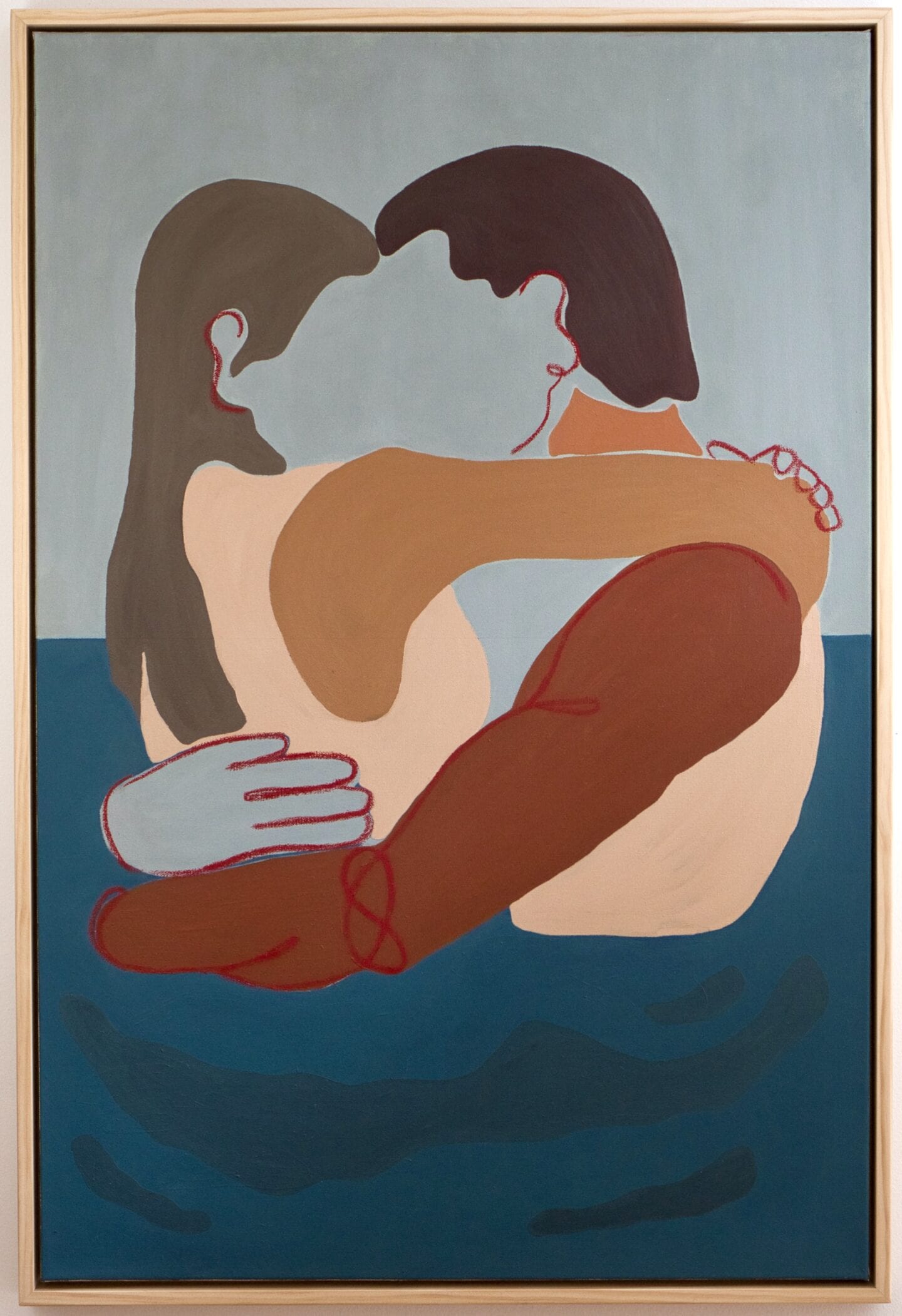
What was it like to be creating works for an exhibition during quarantine?
The majority of artworks for my solo show, Note to Self, were created in quarantine. I felt lucky to be an artist during the height of the pandemic, because during this unprecedented time, I had a clear purpose and mission — I was able to take in the socio-political climate, the chaos and elevated emotions and transmute this energy into creative work. In a way it allowed me to make sense of the world, and channel my energy in a healthy direction — Also having a hard deadline for an upcoming solo show helped to stay focused! Of course, it was extremely isolating nonetheless, more so than usual given the social distancing measures in place.
I usually work with live models for my figurative work, and being in quarantine, I was forced to rely only on my imagination, and/or use myself as a model. It gave me more confidence in the power of my imagination, and my experiences thus far to create an entire body of work from very much an internal place — from being an observational artist, I quickly moved into a very intimate, reflective, contemplative space of creation.
Glass Rice, the gallery I am working with for my solo show, and I had the show planned for months before the pandemic, and we had no idea at the time what was coming. So although we always did have the show planned, it changed shape and form in many ways to adapt to the times. Masks on at the opening, with limited capacity in accordance with local measures. Definitely not the opening night I expected, but a very interesting one for my debut solo show that I will never forget! Seeing the number of people that came out to support me, despite the strange times, filled me with hope and gratitude and reminded me that as humans, we have a deep seated desire to connect with one another.
Tell us about your debut solo exhibition “Note To Self” at Glass Rice in San Francisco. You presented figurative oil paintings with abstract acrylic pieces. How did these work together conceptually and physically in the space in which they were displayed?
Note to Self, was my debut solo show in San Francisco that concluded recently. I am still completely overwhelmed with gratitude and in awe at the response to the show. The exhibition was completely sold out!
This collection explored self-discovery through memory and personal narrative. An intensely personal collection, all the artworks mark a significant moment in time, a poignant emotion revealed, or an experience encountered in my own multi-faceted journey of returning back to myself, a huge part of which is my voyage from my native country of India to my current home in San Francisco.
The figurative and abstract works were interspersed on the walls of the gallery, suggesting that they should be considered with equal weight. Although they are different stylistically, they are analogous in concept. While the figurative artworks focus on micro-expressions and gestures to unveil a world of emotions, the abstract works represent the microscopic moments of emotion in pure essence once the physicality of the human form falls away.
As an example, my figurative painting, This Must Be the Place was on view right beside my abstract painting, Collide Into You. In the first, you are looking in on an intimate embrace, a shared private moment in warm shades of orange, burnt Sienna and red, limbs intertwined and heads close in an infinite pool of water. In the other, similar abstracted shapes and shades of color overlap with one another from various angles, coalescing in the middle of the canvas and reiterating feelings of warmth, belonging, and love.
Although this body of work is very much a reflection of my journey, it evokes a plethora of familiar emotions – nostalgia, longing, joy, and contemplation, and my hope is that it transported viewers to their own internal mindscapes, prompting everyone to reflect on their own estranged emotions, experiences of transformation, and internal narratives of change in their own quarantined abodes.
Congratulations on the success of the exhibition! How did you feel finally seeing the show come together?
Thank you! When I finished the final painting, I broke down in my studio, surrounded by all my work. I had been working 10-15 hour days for over 5 months at this point, and was emotionally and physically exhausted. It was truly a feeling of catharsis — relief mixed with joy, empowerment, loss, and fulfillment.
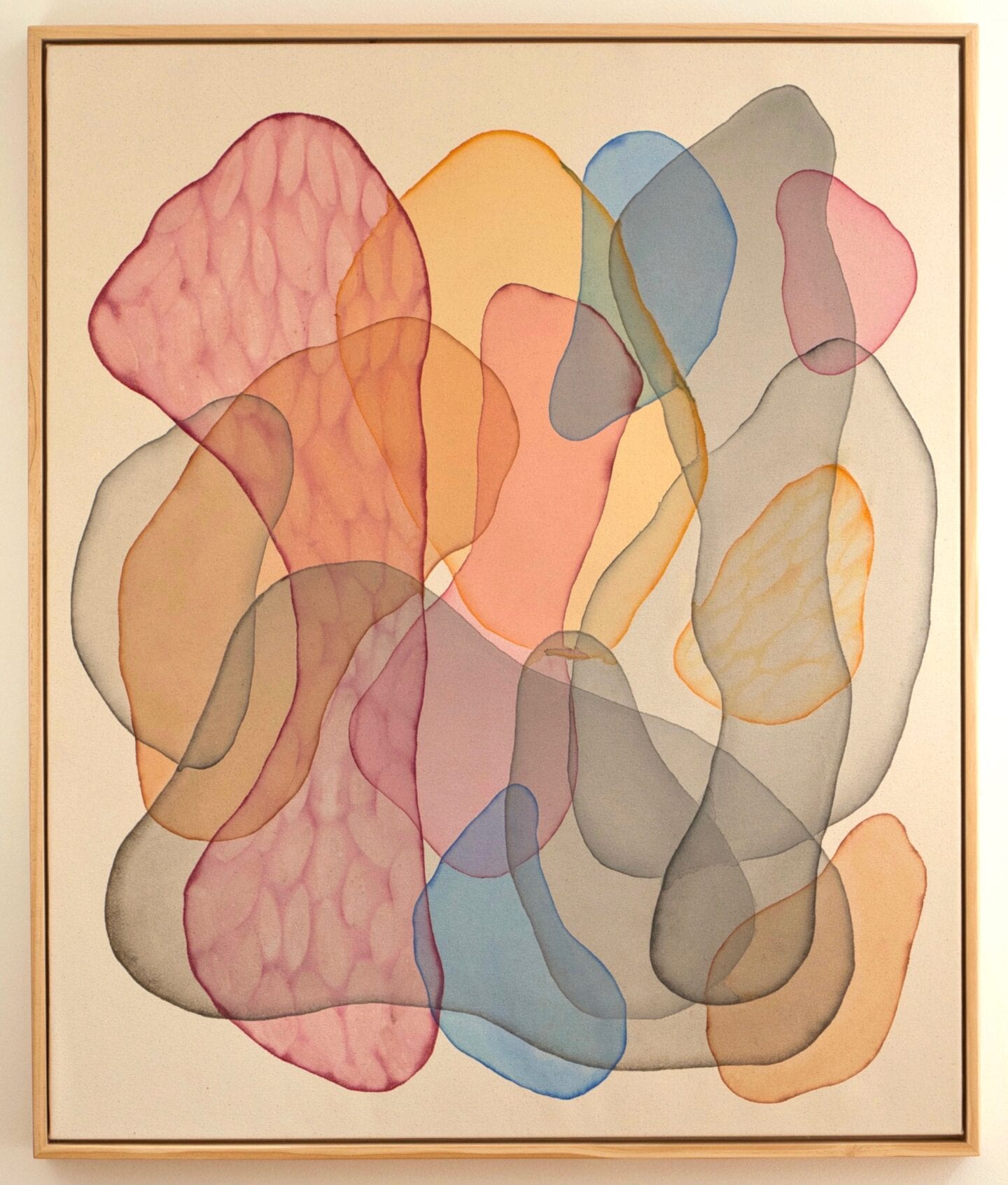
Any advice for artists soon to be mounting their first exhibition or who want to begin showing with galleries?
Plan ahead! I had planned a daily schedule out months in advance, so that I had a clear overview of when all my work needed to be completed to allow for enough time for framing, photographing, and installation. To be honest, I’m a bit of a Type A artist in that way!
It’s also important to choose the right gallery partner for your show, or for representation — It really comes down to the relationship, and if both parties trust each other, and want to ensure each other’s success. I think it’s often a misconception that once you work with a gallery, it is their responsibility to sell all your artwork. This is not the case, and it takes effort on your part to nurture your collectors, build your community, be vulnerable to put yourself out there, and give back in your own way.
What will you be working on for the rest of 2020 and into next year? (We’re happy to shout out any other projects, shows, and collaborations)
Although I’m taking a little time off to begin with, I have a few interesting commissioned artworks that I will be working on for the rest of 2020. Alongside those, I have ideas percolating for my next solo show in 2021, so I’m sure to be back in the studio in no time!

